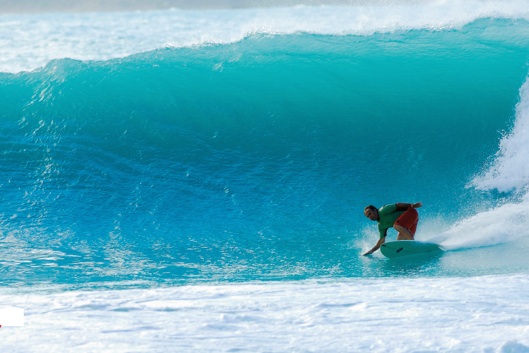
David surfs his front yard at Kgbay.
5.10′ Twinzer shaped by larry mabile. foto by sam jones.



billabong-showcases-the-art- of-wolfgang-bloch/
http://www.surfline.com/surf-news/
wolfgang-bloch-shows-opens-in- orange-county-surf-art-at-the-laguna-museum_19371/
coming in october:
artist wolfgang bloch,
designed+afterword by dc.
from chronicle books.
spreads from Ortlos Architechure dcd designed book.






 Greetings,
Greetings,
Inspired design student wondering how Mr. Carson went from high school teacher to culture changing icon. ハWhat happened to change your career path. I’m trapped in corporate America and aspire to create with subjective freedom.
Short answer desired, I know you’re busy and would be honored to receive a response and won’t be deraired if I don’t.
Thank you for you work Mr. Carson, you have made a believer out of us all.
Brent
Nebraska surfer and designer optimist
Lincoln Ne.
july 22,2008







Inspired design student wondering how Mr. Carson went from high school teacher to culture changing icon. ハWhat happened to change your career path. I’m trapped in corporate America and aspire to create with subjective freedom.
Short answer desired, I know you’re busy and would be honored to receive a response and won’t be deraired if I don’t.
Thank you for you work Mr. Carson, you have made a believer out of us all.
Brent
Nebraska surfer and designer optimist
Lincoln Ne.
july 22,2008
“Dominant Wave Theory, Photography by Andy Hughes”
published by Booth-Clibborn Editions,

Dominant Wave Theory
Photography by Andy Hughes
Reviewed by Stephen Brigdale
July 2006
published by Booth-Clibborn Editions,

Dominant Wave Theory
Photography by Andy Hughes
Reviewed by Stephen Brigdale
July 2006
This forward thinking photography book features over 150 photographs by the artist Andy Hughes made on different beach locations from California to Western Cornwall. The book explores and examines the relationship of beach waste as both an object of visual enquiry and as a reference to the global environmental crisis. “Dominant wave theory”, we are told, ” is loosley based on a scientific term used in the prediction and observation of wave models”. The book sets out to parallel this idea visually through the observation of the beach as a local site for the interplay of nature and consumer culture.
Through extraordinarily focused colour photographs of found waste objects, the reader is offered tangible stilled moments of reflection on the nature of these objects and left to ponder their place in the world now that their original purpose has been washed (eroded) away. This extensive archive of images forms the core of the project with the design and development of the book by David Carson working to heighten the visual scope and pace of the work. This is apparent in the scale, ordering and pairing of the images, creating thoughtful and revealing relationships throughout the book.
The photographs are complemented by a collection of essays by five eminent writers, who are here linked through the common thread of the project but coming from a wide range of perspectives. They discuss ideas connected with the beach from eco-activism through to cultural theory and marine biology; their contribution extends and puts into context ideas initiated within the photographs.
The essays open with a discussion by Dr Christopher Short, of the visual context of Hughes’s work as a contemporary art practice. The wider implications of these photographs, in terms of art history through formalism and the development of modernism in St Ives (Hughes is based in West Cornewall), are speculated upon together with tourism in this locale to draw anthropological perspectives. The political dimensions of environmental activism; the tackling of waste and changing our relationship to waste generation, are developed in writings by Chris Hines and environmental advocate Joshua Karliner. The latter in his essay, discusses ecological and industrial development and counters with alternative futures. In contrast, the existence of the beach as a physical and metaphorical site are explored and linked with histories and archaeologies in the essay “The Beach as Ruin”. Here Lena Lencek makes wide ranging connections that play histories into the present and focus Andy Hughes’s work in time: as both representative of the present while simultaneously prophetic of possible dread futures. No less prophetic is the discussion, by Dr Richard Thompson, of scientific marine data, gathered about the effects of plastic debris in the world’s oceans; the scale and persistence of which makes shocking reading.
The photographic work produced in this book creates references that allow a wide cross comparison between the images; this is carried through into the page design of the appendix which acts as both a catalogue of all the images and locations as well as an accumulating visual glossary of beach waste. The structure of this book is striking visually, defined by the everydayness of the objects and the uniqueness of their depiction.
The breadth of ambition of this book is wide and the issues that are addressed of contemporary significance. Visually it deals with these in a thought provoking and seductive way; the essays extending these images into far reaching debates, the whole work culminating in an important contribution to the ecological paradigm.
© Stephen Brigdale 2006
Subject: The End of Print
I can’t believe I’m actually typing this because who knows if you even check this particular email-but here it goes. My name is Meghan and I’m a graphic design student from Ohio. A few months ago an assignment in one of my classes was to redesign a publication the way that another designer would do it. So I searched the web and found a few of the classic designers, and even though their designs were stunning they didn’t really interest me. So I decided to look at some design books instead. When I finally saw your book I freaked out because I couldn’t figure out where the title was, which was the craziest and yet most wonderful thing in the world to me…that you could create a response like that with something such a small detail. For the first time I felt something click. Since then I’ve probably “read” every page of The End of Print at least 15 times now, and I find new things in it each time that I never noticed before. Reading your book has changed my style into something that I can’t explain, which is what I love about your designs. Before I saw your work type was secondary-and more like a chore. But now it’s like a weight has been lifted off my shoulders-and it doesn’t have to be anything, and I’m finally free. I don’t think it should even be called type anymore. You have been a such a huge inspiration to me, I’m curious as to what inspires you-or if your ideas just smack you right in the face. I would also love to come to a workshop of yours but I have no idea how to go about doing it-I do hope to one day meet you in person.
meghan
july 10, 2006
I can’t believe I’m actually typing this because who knows if you even check this particular email-but here it goes. My name is Meghan and I’m a graphic design student from Ohio. A few months ago an assignment in one of my classes was to redesign a publication the way that another designer would do it. So I searched the web and found a few of the classic designers, and even though their designs were stunning they didn’t really interest me. So I decided to look at some design books instead. When I finally saw your book I freaked out because I couldn’t figure out where the title was, which was the craziest and yet most wonderful thing in the world to me…that you could create a response like that with something such a small detail. For the first time I felt something click. Since then I’ve probably “read” every page of The End of Print at least 15 times now, and I find new things in it each time that I never noticed before. Reading your book has changed my style into something that I can’t explain, which is what I love about your designs. Before I saw your work type was secondary-and more like a chore. But now it’s like a weight has been lifted off my shoulders-and it doesn’t have to be anything, and I’m finally free. I don’t think it should even be called type anymore. You have been a such a huge inspiration to me, I’m curious as to what inspires you-or if your ideas just smack you right in the face. I would also love to come to a workshop of yours but I have no idea how to go about doing it-I do hope to one day meet you in person.
meghan
july 10, 2006
all available now,
“Dominant Wave Theory, Photography by Andy Hughes”
published by Booth-Clibborn Editions,
“Ortlos: Architecture of the Networks” 216 pages book,
by ortlos architects and david carson, foreword by thom mayne.
published by Hatje Cantz,
“F!rst Point” magazine, #3 available now!
(the link for US subscriptions is here.)
interview- first point magazine, issue 2
cover, “buero am meer®” magazine by sven hoffmann,
ISSUE NUMBER 4, Carson: Family matters.
photographs + layouts from the life, david carson, 240 pages, bw
“almaquatica” by klaus mitteldorf, sidney tenucci, david carson, coming soon!
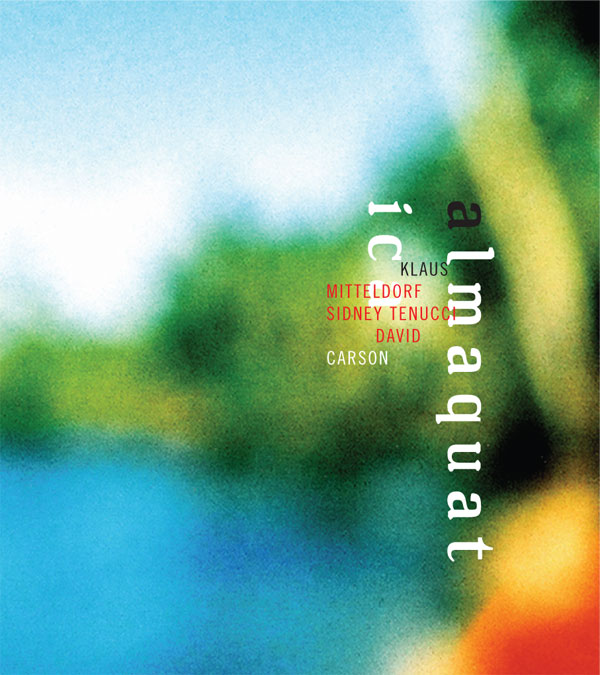
“Dominant Wave Theory, Photography by Andy Hughes”
published by Booth-Clibborn Editions,
“Ortlos: Architecture of the Networks” 216 pages book,
by ortlos architects and david carson, foreword by thom mayne.
published by Hatje Cantz,
“F!rst Point” magazine, #3 available now!
(the link for US subscriptions is here.)
interview- first point magazine, issue 2
cover, “buero am meer®” magazine by sven hoffmann,
ISSUE NUMBER 4, Carson: Family matters.
photographs + layouts from the life, david carson, 240 pages, bw
“almaquatica” by klaus mitteldorf, sidney tenucci, david carson, coming soon!


Sent: Jul 25, 2005 6:37 AM
To: dcarson@earthlink.net
Subject: Trek
july.24 05
Mr C…
‘Ini sungguh menggetarkan hati.”
(It’s real vibrate heart).
The big questions for surfaces?
All revealed.
Genius.
Antobowo (Jakarta)
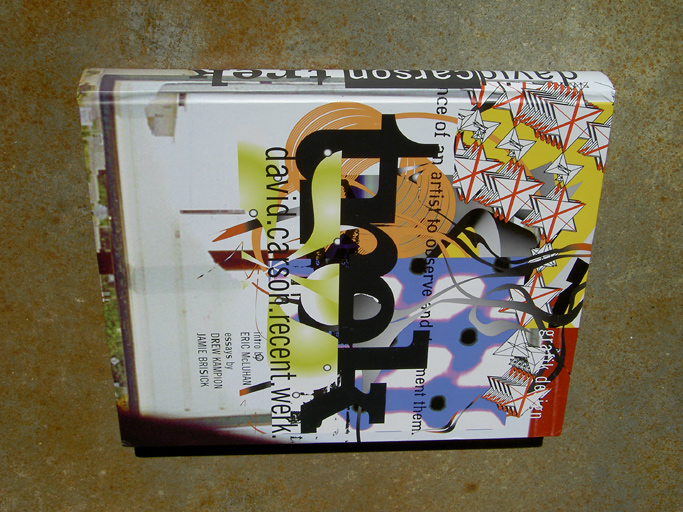
Hi David,
I just wanted to thank you for your work and inspiring me. Your the reason I wanted to do graphic design (you must hear that a lot). I first saw your work for Ray Gun at the Borders in my hometown in Illinois. I didn’t even know what what you did was called, but I knew at that moment that’s what I wanted to do. That was about eight, nine years ago… I went to art school and worked at a few design agencies, and now at an in-house design department for a fairly large company near Portland, OR. I came to a transitioning point these past two days, and decided I should go back and take a look at what inspired me in the first place. I went to the Borders here and checked out your book, Trek. It re-inspired me… and when I saw the page with the spread (with a cropped photo of a red flower) and the next page with the little stars scattered across the page, it went straight to my heart, and I knew what I wanted to do. Your work inspired me nine years ago, and did it’s work again just today. I plan on finding more creative work now. Thanks for that. What you said, “Trust your gut. Do what you love…” really stuck with me as well. I believe it. I put it on one my stickies on my laptop. Anyway, just wanted to say Thanks for all YOU do… and inspiring and motivating all those who appreciate your work… and to let you know you are making a positive difference in people’s lives.
Tommy
april.30 05
hello david,
my name is daniel orme and i live in south africa. I am in my second year of graphic design and am at a constant srugle with all the closed minded lectures who live inside there boxes. I came across a copy of “end of print”first edition, in our campus libary in the first week of my first year, it was hiding at the back, just that one copy. At first it was the cover that appeald to me, the spine barly cracked I started paging through the first few pages. It was like every page was gold and i tryed to handle the leaves as little as i could so i didnt damage them… I couldnt discribe the feeling i was feeling, I sorta colapsed down to the floor and cradled the book in my folded legs and continued to page. My girlfriend,Mel, work for a sub culture surf/skate/music magazine called Blunt and the publisher sadly hates your work along with the conservative designer, but the editor had a copy of the End of print(updated) so I am borrowing it, iv had it for about a month now and i cant stop looking through it, I literely read it every single day. I am saving up to buy “Trek” and my own copy of “end of print” But its hard to save when you spending money on printing every week. We have the “Design indaba” In Cape Town and i saved up just enough money to go last year but the week befor i was forced to spend it all on printing. And our economy doesnt help either. Please forgive me but I even contenplated tryna steel “end of print” from our libary. Dont worry I will buy it… eventually.
Iv got my British citizinship so as soon as im done studying im goin over to live and work for a while…maby I could meet your friend Ed. I was also thinking about the U.S, then i could meet you…That would be the highlight of my life, If i die after meeting you then I die a happy man…ha!
Oh well,I really hope you get this and I hope even more that you arnt to busy to say hi. Thank you soooooooooooooo much doing what you do,
you are more than an insperation for me.
Till we meet,
daniel
mar.23 05
Sent: Mar 23, 2005 10:49 AM
To: dcarson@earthlink.net
Subject: way2go
way2go! as the first time I saw david carson’s design, it seemed the world has turned upside-down. postmodernism has colored the world of grafik design. david carson is iconed as an icon of postmodernism design (according to No More Rules in Postmodernism Graphic Design). and recently I have been studying of what postmodernism is. mr carson, i still don’t understand its concept–beats me. i wonder if you would drop by to indonesia
feb.25 05
Sent: Feb 25, 2005 3:51 PM
To: dcarson@earthlink.net
Subject: thanks for the inspiration
I just picked up your book TREK at my local book store.
I almost cried.
I have decided that i am going to rock the art world.
See you in a few years.
-Rob Mach
dec.14 04
Dear David Carson
I have just graduated from college as a typographer, and wanted to let you know that in the whole boringly derivative world of contemporary graphic design, yours is the only work that is genuinely original, refreshing, and makes visual and intellectual sense. I love it. Thank you for providing so much inspiration.
All the best
Shaun
london
Dec, 14.04
nov.30 04
Hi, i hope this email gets to Mr. Carson somehow. I am a student at The Art Institute of Portland OR, well im going to be graduating the 17th of December. i just wanted to tell you how much i enjoy your books, the only thing that really keeps me moving along is seeing how much different and creative someone is besides what the system wants designers to be. My graduating class is having a portfolio show and everyones book looks pretty much the same, all but mine. in a way i am kinda scared because my stuff is so much different, but in a way i know its better that my work doesnt look like everyone else’s. Thank you, through your books for having a direct influence on what i do and how i look at design, unlikely i would even be this far if it wasnt for them. i am enjoying your new book, keep up the good work.
-Carlos
Jul.23 04
“No one can get me to sit down and thumb through a 450+ page scrapbook except the grandmaster of Graphic Design himself, David Carson. Page after page DC’s Trek creates a sense of newborn wonder”
Jason Brooks – BPM magazine issue 55
june.14 04
david
Just saw you’re new book ( TREK )! Man, soooooooo nice… again!
You’re the best! Live long!
Good Day…
;) mike
june.14 04
Hey David, it’s Kent . I met you when you were speaking at the Art Institute of Pittsburgh, in 2002. I’m absolutely estatic about the release of Trek! Your beautiful work in a deconstructive manner shows that the world, and all in it isn’t perfect. Yet somehow when I view your art it seems to make a bit more sense. So glad to see the overwhelming amount of new stuff to look at and perhaps print has not yet reached its
june.10 04
hello mr. carson. you may be wondering a bit about my email address (the whole @us.army.mil thing). well, i am in the army, and am an aspiring graphic designer. you might think the two contradict each other, and perhaps they do, but it is all a part of my trek (seriously, no pun intended!). my eyes were opened to this amazing field of vision and imagination when i attended the california state summer school for the arts, csssa, at cal arts in valencia, ca. i had origionally signed up to major in painting during the month-long session, but realized that it probably was not the best of choices for me. at teh time i was unsure of what i wanted to do with my creativity even though i knew then that i wanted to be an artist. i attempted to get into an animation class but could not based on registration and portpholio requirements, so teh next best choice for me was digital media arts. i will admit i was a tad reluctant at first, but oh, how i fell in love the first day. that one month i spent glued to the computer as if it were my life line.
it was truely a liberasting experience. it was only after i left csssa that i realized i was interested in graphic design all along when i returned to my room at home a saw all the magazine spreads tacked to my walls, teh stacks of cd jewel cases, and teh misc postcards, promos, etc. after csssa, however, i had a lack of inpiration, until i found one of your books. my first book on graphic design htat i bought was 2nd sight. i saw both theendofprint and 2ndsight, but for whatever reason i chose the later. reading about how your art was fed by your intuition really sent me into a designing frenzy since then. i currently own (and have read) theendofprint, 2ndsight, fotografiks, and trek.
it is very dificult trying ot express myself as an artist while serving in the military, but i am managing. my sketchbooks are becoming large bodies of works in themselves. i can’t seem to stop drawing, printing and thinking about design. i suppose that what i am trying ot say amongst all of this blah, blah, blah and stuff is thank you. thank you for inderectly providing me with teh artistic direction, guidance, and inspiration that i have been craving. i most anxiously look forward to getting out of the military after my tour and attneding school for design before, after, of while my wife attends for fine art. it is in my blood, my heart and my soul. it is one of my many ways of life. it is how i choose to view the world. again, much thanks for making me think. if you have the chance please write back, if not, that’s cool too. take care.
andrew
june.5 04
Mr Carson,
I was recently given trek as a gift for being a great mother and an incidental grafiste. Thank you!
I LOVE it!
I saw you a few years back in Sydney, Australia, and you inspired me then; with trek I can dream, learn and enjoy the seemingly limitless possibilities of design in the comfort of my own home…
This email sounds really pretty corny, but I really wanted to let you know how much of an inspiration your work is.
Okay, over and out for now,
Be good and enjoy the surf.
caro (Australia)
feb.24 04
hi david i toke the book today(!) from my country (gr)
i was ready to buy it from amazon… but the book came here at the right time!
anyway… this book… how can i say… bring me back to a new inspiration..
to change the thinks in my work.. in my life… to change the way to do the most thinks…
to put some ideas in right way… the right claim for this book is ‘free your mind’ !
thanks for all,
Kostis
feb.12 04
jack babiloni
David Carson made history in magazines and many people can’t stand envy, especially bad (conventional) designers.
DC was and IS the king of typographers and I thank him because he made bad writers to look masters and when I see his work I feel alive, tense and emotionally touched.
Nothing in world graphic design (except my work and Jennifer Sterling’s) seems to be as alive as his.
Thank you for reinvent the beauty, Mr Carson!
feb.5 04
Mr. Carson,
Judging from the number of letters and e-mails I saw printed in your latest book, I assume you get quite a few letters like this. Regardless, I still wanted to write you to tell you what an inspiration your work has been. When it was first hinted at that you would be doing the graphic design for Nine Inch Nails’ album The Fragile, I looked you up online and ended up purchasing your book as soon as humanly possible. I loved what I saw then, and I continue to love your work. It’s easy to forget that our world is simply made up of intricate shapes and colors, and your work emphasizes the simplicity AND the intricacy of this concept. It makes you think, and thrills the senses all at once. Thank you for the work you do, and here’s to many more years of Fotographics!
–
Chris Brightly
feb.5 04
David, or whoever will read this. You are the inspiration ITEM for my work. I am a graphic designer, and your work was the subject of my Masters degree. 3 years are past since I finished my studies, and I still remember almost every word of your books, article, etc. Thank you for changing my visual point of view.
Yiannis Hadjipanayis
GraFik Designer – VISual Communicator
the first Email/review of trek.
“Grande Carson! this is the book we were waiting for!
it deserves a special place in our studio’s library
thanx
alex
art force thesign
italia”
hi david_
just dropped by @ artazart_paris for a copy of trek.
love it
dreamed through some of the speads last night (!!!)
which means that it goes way down deep. bravo.
TREK is great, its the best ive ever seen as a design-book. and, it is art, art because you made it to a personal book. i feel more respect then ever for you, because you brought your live to a closer look. beginning with lots of pics about the surf and about your son and daughter,they are really sweet, because of the arriving of the kitchen to tortola… the small things that matters. sorry, my english is to bad to put it in right words what your life-work means to me…
and i also see in the book some sadness, some hard times you must have been going through…and it reflects some pages, for me…but its art so its just my interpretation…
i truly love the book, respect you more then ever… and hope to meet you one day for at least a cup of coffee.
sven
The first Probes review on Amazon.
5 stars on amazon
“a beautiful, insightful book for the post-literate era, December 5, 2003
High praise to Gingko Press for such a beautiful book in both construction
and graphics, a retrieval and development on the original Quentin Fiore
collaborations of the sixties. And this is no ordinary book of quotations,
organized by topic or chronology. Each quote indeed acts as a probe for the
reader, and of the reader; and collectively each of the hundreds of isolated
insights echo and haunt the others. The effect is similar to the famous
Monday night seminars; close the book and you are not quite sure what you’ve
learned, but walk around and the way you see the culture has been changed.
For the literati, there is an introduction and an important essay by W. T.
Gordon describing McLuhan’s debt to de Saussure’s linquistics. But this is
not a book for the scholars and their after-the-crime-has-been-committed
analysis. This is a book for the streets, not the ivory tower, for the poets
and novelists, the misfits and malcontents of the digital consensus. It’s a
good review for those familar with McLuhan, and should be a fine
introduction to a new generation of independent media scholars.
5 stars on amazon
“a beautiful, insightful book for the post-literate era, December 5, 2003
High praise to Gingko Press for such a beautiful book in both construction
and graphics, a retrieval and development on the original Quentin Fiore
collaborations of the sixties. And this is no ordinary book of quotations,
organized by topic or chronology. Each quote indeed acts as a probe for the
reader, and of the reader; and collectively each of the hundreds of isolated
insights echo and haunt the others. The effect is similar to the famous
Monday night seminars; close the book and you are not quite sure what you’ve
learned, but walk around and the way you see the culture has been changed.
For the literati, there is an introduction and an important essay by W. T.
Gordon describing McLuhan’s debt to de Saussure’s linquistics. But this is
not a book for the scholars and their after-the-crime-has-been-committed
analysis. This is a book for the streets, not the ivory tower, for the poets
and novelists, the misfits and malcontents of the digital consensus. It’s a
good review for those familar with McLuhan, and should be a fine
introduction to a new generation of independent media scholars.
TREK :456 pages New,
DC’s first graphic design book in 5 years. Get’ ready.
Intro by: Erik McLuhan
Essays by: Steven Heller, Drew Kampion, Jamie Brisick


Trek to arrive in usa on dec 5th 03′ from italy. (Europe +asia the week before.)







DC’s first graphic design book in 5 years. Get’ ready.
Intro by: Erik McLuhan
Essays by: Steven Heller, Drew Kampion, Jamie Brisick


Trek to arrive in usa on dec 5th 03′ from italy. (Europe +asia the week before.)








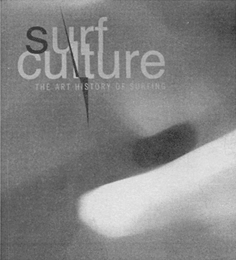
SURF CULTURE: THE ART HISTORY OF SURFING
Review By Mike Fish, ‘ESM’
In last issue’s Surf Art feature (Vol. 12, #88), ESM posed the following question: Surfing-art or sport? A related riddle would be: Ls there a difference between the surfer who makes art and the artist who surfs? The answers to these ambiguous musings certainly don’t come easy, but the newly released print masterpiece Surf Culture: The Art History of Surfing dips deep below the surface to explore the relationship between the two different- yet ultimately related-forms of expression.
This book is truly one of a kind-but in many different ways. Realistically, you could write three separate reviews for Surf Culture, from the standpoints of literary topic, photography, and layout. Encased in a top-quality binding, it’s a vast historical reference; a photographical tour-de-force; and a portable art gallery in your hands. Pour all that into multimedia award winner David Carson’s legendary design blender, and you’re sipping one hell of a verbal and visual cocktail-and a potent one at that. It’s a lot to digest for even the most sophisticated palate. But take your time and imbibe slowly, because if you savor each sentence, piece of imagery, and mind-blowing layout-you’ll definitely close the pages satisfied… and even a little buzzed.
From the 200-pound balsa planks and romantic curl searches of the early 1900s to the present day’s flyweight tri-fins and internet surf forecasting, the book takes an inventive look at the themes that coalesce surfing, art, and pop heritage. Surf Culture works to define the sport’s progression (spiritually, physically, and industrially), and its uncanny impact in the realm of art, while dispelling some of the nebulous myths accompanying its rise to popularity. “Kids in Kansas bolted surfboards to the tops of their cars in homage to the imagined surf lifestyle,” Craig Stecyk-longtime surf/ skate scene observer and co-author of the screenplay to the film Dogtown and Z-Boys-writes in the introduction. “The marketing frenzy, led by non- surf types, redefined the parameters of popular culture.”
For the surf veterans in our tribe, the opus provides a nostalgic ride down the sacred memory line, while the rising grommet or newcomer practically finds a unique education full of glimmering treasures and unmatched heritage. Hundreds of illustrative color photos, art in every conceivable form, arresting pull-quotes, and six kinetic essays weave the plotline. The narrative runs similar to a series of short, creative historical tales that connect-kind of like a film by Quentin Tarantino or Oliver Stone. Carson’s signature, beyond-the cutting-edge design flows like a collage, making you feel like you’re flipping through a salient scrapbook or intricate mixed-media surf diary. And although the layout can be a little overwhelming at points in relation to the text, because of its extremely abstract nature, on the whole it compliments the flow. The writing is topnotch, showing a noticeable diversity in style and content from all contributors including Stecyk, Bolton Colburn, Ben Finney, Tyler Stallings, Deanne Stillman, and Tom Wolfe.
The in-depth, 279-page endeavor was published as part of an art exhibit organized by the Laguna Art Museum in Laguna Beach, CA, and The Contemporary Museum Honolulu, HI. The show has already received a steady swell of international acclaim from dozens of journals and newspapers, and the Contemporary Art Center of Virginia recently brought the exhibit to its only Right Coast venue. “Surf Culture is not a comprehensive survey of the history of surfing, or even art related to surfing,” writes California surf legend Bolton Colburn, director of the Laguna Art Museum. “There is no way it could be. In the process of preparing the exhibit, we soon realized that we could not address every question or pursue every angle. Surfing and its effects on contemporary culture is too large a subject for one exhibition, or one museum to tackle.” But the writers, editors, and designers did a damn good job of encapsulating a subject that resists being so easily pigeonholed. Because of this, Surf Culture isn’t merely an art book. Instead it’s a fundamental resource on the history and meaning of our endless pursuit, playing an integral role in the past, present, and future of surfing.
So is there a line in the sand between the surfer who makes art and the artist who surfs? Possibly, but the themes in Surf Culture could argue that the liquid bond between the two almost makes them one in the same-similar to the rider and the wave.
This book was published by the Laguna Art Museum in association with Gingko Press, Inc. and costs $39.95 for paperback and $49.95 for hardcover. For an extended online preview, visit
www.lagunaartmuseum.org and to order, visit www.gingkopress.com or e-mail books@gingkopress.com

SURF CULTURE: review from ‘ADRENALIN’
Laguna Beach is a funky town by
Orange County standards.
Sure it has its high-rent bistros and slick boutiques, and its streets are prowled by as many Porsches as any of the beach communities up and down LA’s coastal megalopolis. But ‘tuna town’ has a creative edge. You’re more likely to hump into an interesting character in somewhere like the Sandpiper, the late nigh divery on PCH, than you are the perfectly molar-ed spawn of a gated community. And this, moreover, is the centre of the surf universe as far as America is concerned. So what a perfect place to get together a definitive exhibition on surf culture that both reflects the material manifestation of wave-riding over the last century or so, and places it in its contemporary megabucks manifestation. And what a perfect context expands and adds to what was on show.
Hiring David Carson to design and produce Surf Culture: The Art History of surfing is another inspired decision by the publishers. Carson has become synonymous with surf culture in print through his association with Surfer magazine and, perhaps more importantly, the mould-breaking but tragically short-lived quarterly, Beach Culture, which, in the early nineties, attempted to break the stranglehold of hydro-porn and monocultural content that had (and continues to) beset mainstream surf magazines. Carson went on to create the initial designs for Raygun, another title whose visual identity broke ground during the publishing boom of the nineties.
There are interesting texts in the book by the likes of (you guessed it) Craig Stecyck, and an anthropological perspective on wave-riding by the University of Hawaii’s Ben Finney. Tom Wolfe’s classic deconstruction of San Diego’s Windansea surf community is re-produced, and Carson, as one would expect, provides fluid, dynamic layouts and images, which suit the intention and feel of the book perfectly, even if they are at times a little heavy-handed. But perhaps the book’s major achievement is its placing of surfing at the cutting edge of creative culture and, in this age of corporate bullshit in board shorts, actively asking the question: what exactly is surfing?
Surf Culture: The Art History of Surfing is available at all good bookshops. www.gingkopress.com
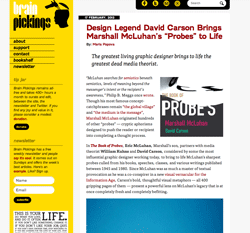

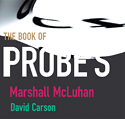
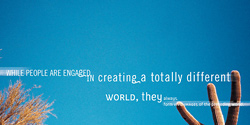
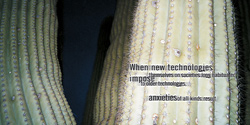
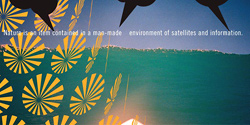
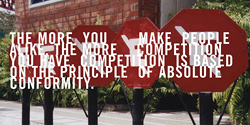
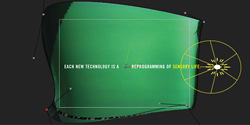
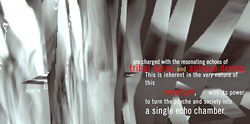
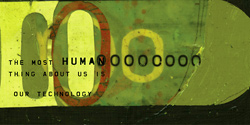
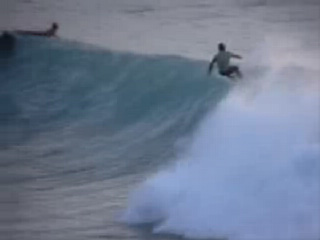
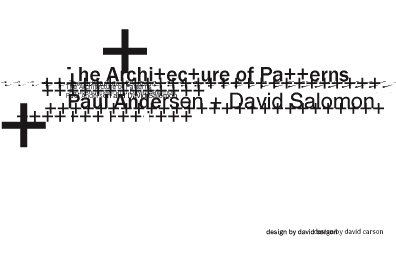
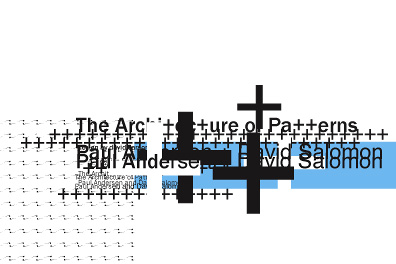
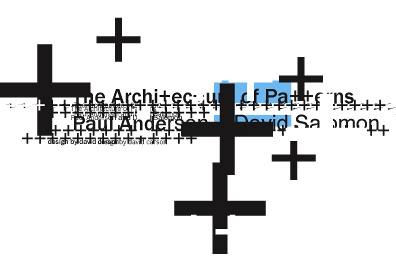
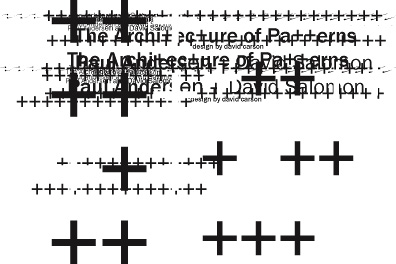


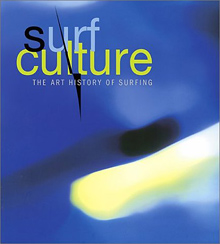

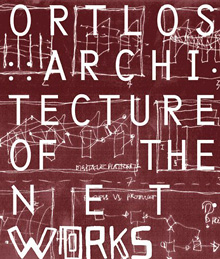
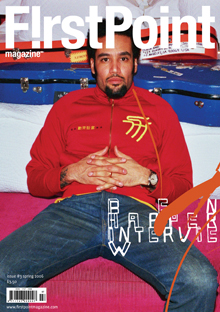
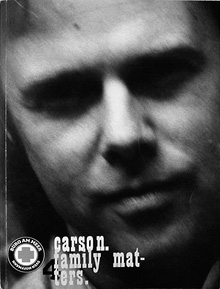
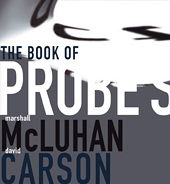

No comments:
Post a Comment